Almost Acer
Tuesday, 21 March 2006
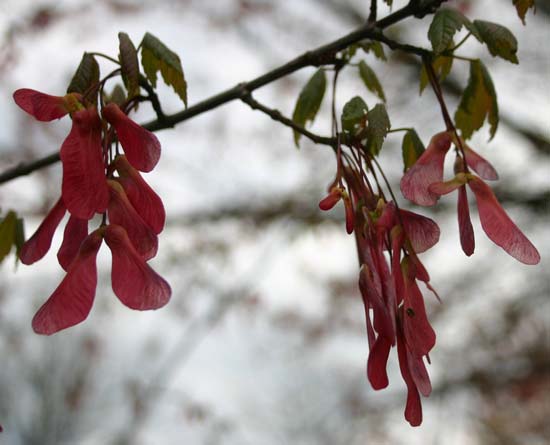
Okay, I won’t do all flower photos; here’re some maple seedlets. I don’t remember ever seeing them so red!
Tuesday, 21 March 2006

Okay, I won’t do all flower photos; here’re some maple seedlets. I don’t remember ever seeing them so red!
Monday, 20 March 2006
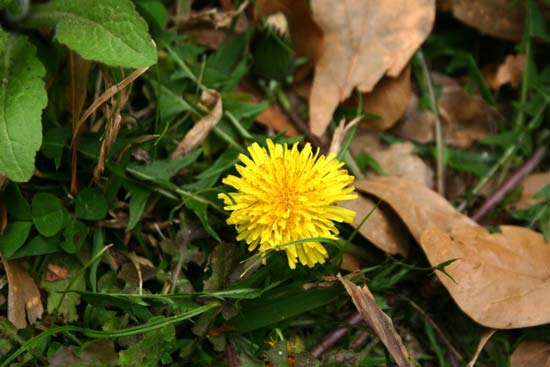
Weather report: A nasty front’s bearing down on us; meteorologists predict flooding, possibly overnight, probably tomorrow.
Lion report: Today’s sample of dandies were mostly seed-poof globes; I saw very few still yellow. In a week, though, the rain, I think, will bring on a new crop.
Cooking plan: when the new crop is out, pick and wash a potful of dandy greens, then sauté with butter and garlic, like you would spinach. Salt and pepper. “Enjoy.”
Sunday, 19 March 2006

Not wormwood
Read about absinthe, that wormwood (Artemesia absinthium) and herb distillate long gone from store shelves across the world, and the displaced New Orleans native named Ted Breaux who is trying to recreate it, in the March 13 New Yorker (sorry, there’s no link to the story, written by Jack Turner). Breaux, a chemist by trade, has aquired a few ancient bottles of absinthe from a dealer who buys them from estates, so he knows what it tastes like—well, 100 years after distilling!—and uses 19th century equipment in a French distillery to make his reproduction.
Apparently, the consumption of absinthe really took off in the late 1800s in France when vineyard production nose-dived—and wine prices rose. However, by the early 1900s, the wormwood component of absinthe was blamed for both “inspirational powers” and “psychoactive properties,” and sale of absinthe was eventually banned.
Thujone is sixty percent of wormwood oil, and the absinthe highs are attributed to it. Breaux, however, tested some ancient absinthe samples, and found almost no thujone, which is removed in the distilling process. The same is true of his modern product.
Newly added to my “try this sometime” list: true absinthe.
Saturday, 18 March 2006
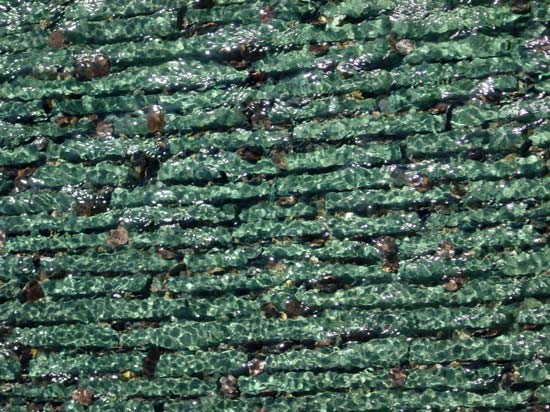
Cool this morning, but the azaleas are now coming into bloom in our neighborhood. I promise: pictures some day soon!
Still, I’m more in the mood for visual texture. Like yesterday’s platter, this too is from the Getty Museum. Just imagine the sun’s on your shoulders, and your feet are tired from gallery gazing, and you’re watching the water pour over these narrow, closely laid stones, and feeling your energy return as the mists raised by the ruffled water drift across your face.
Should you prefer a more lively visual, check out the fire swallowing on Anne’s blahg.
Friday, 17 March 2006

Several years ago, John took me to CA to celebrate my b-day, and we spent my day visiting the Getty Museum in LA, and we saw this incredible platter tucked away near the bathrooms. I’m still enamored of it!
Thursday, 16 March 2006
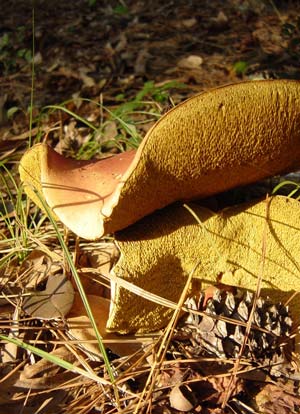 I thought the rain the other night might bring out some fungi, but I haven’t seen a florescence yet.
I thought the rain the other night might bring out some fungi, but I haven’t seen a florescence yet.
I found these boletes several years ago, on the coastal plain down near Savannah, along with many different kinds of ’shrooms on the forest floor. Boletes are distinctive among the fungi because they don’t have gills, but instead have vertical tubes or pores on their undersides. You have to be careful with them and prepare them quickly after cooking because they break down unusually fast, even for fungi.
While most boletes are edible, not all are, so beware!
Elsewhere on the web, They say that the porcini mushrooms common in Italian cooking are boletes.
Wednesday, 15 March 2006
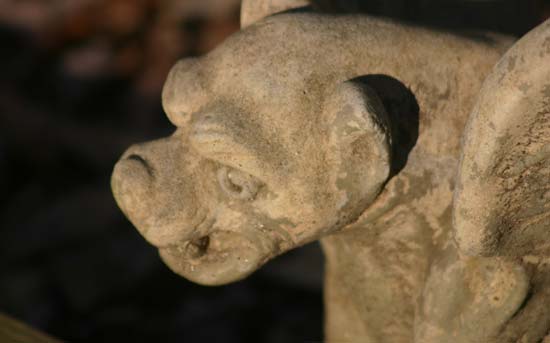
Over on John’s blog, commenters are raising quite a storm. John wins and the goofball is exposed big time!
Me, lemme remind you that gargoyles are not grotesques, and most of those architectural details many people call gargoyles are grotesques. Gargoyles must deliver water (it’s from the French word for “throat”), yet both often are little statues of varying ugliness.
’Nuff ranting!
Tuesday, 14 March 2006
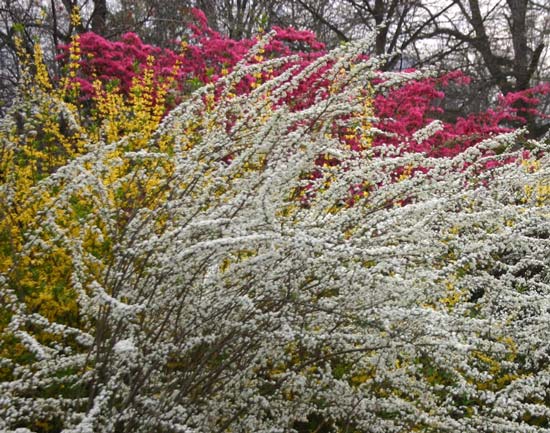
Despite last night’s downpour, our floral displays survive, some flourishing, and some a bit tattered.
Fiction reading: Gail Godwin’s “Queen of the Underworld”, so far quite delightful. Setting: Miami 1959. Also struggling through EL Doctorow’s lauded “The March,” which is good, I guess, but I’m not enjoying it much.
Monday, 13 March 2006

Word is the weather’s changing tonight from the 80s summer temps we’ve been enjoying (?), back to rain and spring moistness.
Here’s an image from the memory banks, taken in early fall last year in the Smokies. I love the “layers” of the hills receding into the distance.
Sunday, 12 March 2006
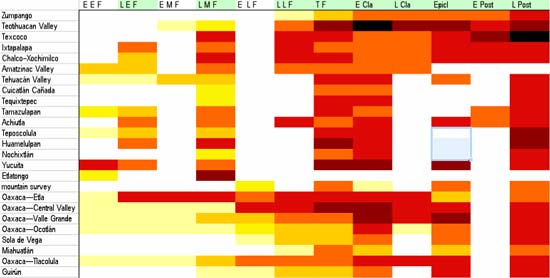
Here’s yesterday’s graphic tweaked, with better logic/data/math behind it; I know it looks like more of the same, but now I feel I can better defend the trends it shows.

Okay, here’s the freaky thing. The triangles, squares, and diamonds are averages of some of the same data in orange and red and yellow at the top, along with means and standard deviations (the gray graduated bars). Hey, it hurts my head to think about it, so I know your eyeballs are crossed!
Interpretation: the short version is that, over time, the populations of all these places tended to become more centralized (but the variations to this trend are exceedingly interesting and informative); the long version is the book this is destined for!
P.S. Did I mention that I was bouncing between FileMaker and Excel a while back? Now, it’s Canvas, Excel, and Illustrator! Oh, my!